
Curator Corner
Bringing them Home: America’s WWII Burial Program
VA History is defined by public service to those who have fought for this country. For nearly 250 years, Americans have responded to the challenges Veterans face in innovative ways. But what happens for those who do not return home? This is the story of three Americans who paid the ultimate sacrifice fighting fascism in Europe, how each one was honored after death, and how the VA History Office is preserving their story.

Curator Corner
The Story Behind the National Homes’ Seal
The National Home for Disabled Volunteer Soldiers turns 160 years old in 2025. The campuses are the oldest in the VA system, providing healthcare to Veterans to this day.
At the time of their establishment, they were the first of their type on this scale in the world. Within the NHDVS seal is the story that goes back 160 years ago.
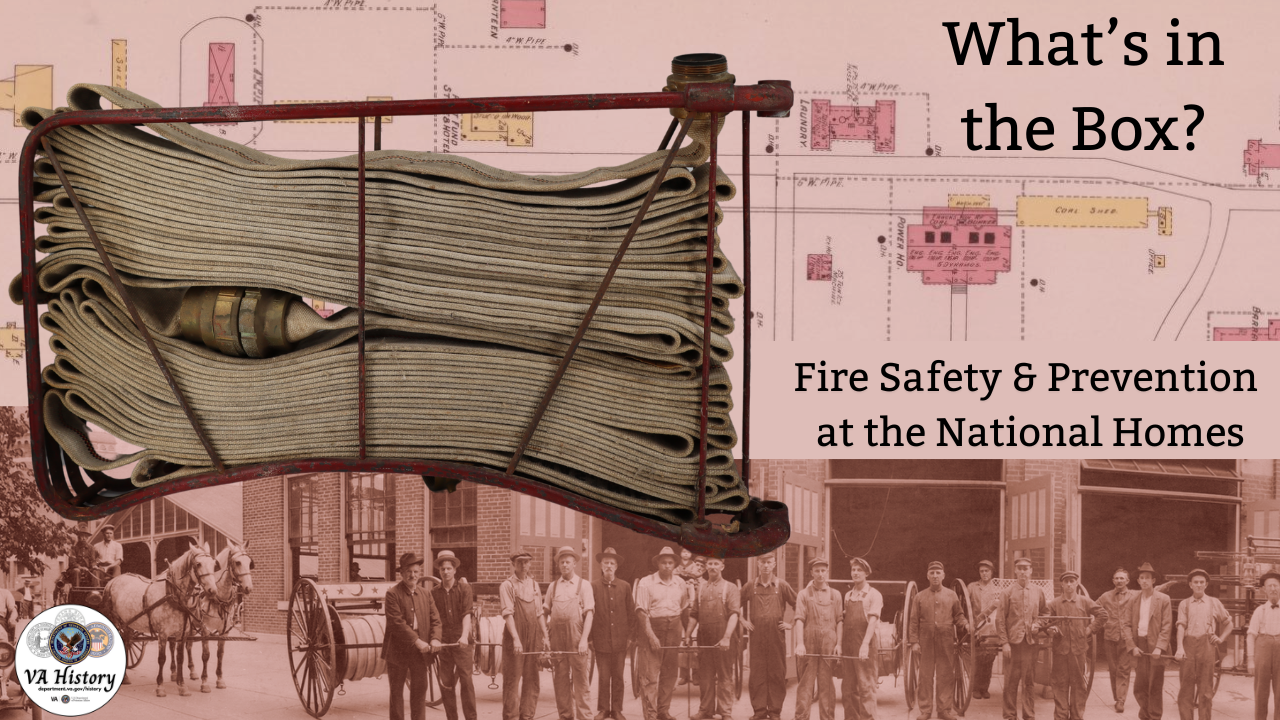
Curator Corner
What’s in the Box? Fire Safety and Prevention at the National Homes
Fire safety may not be the first thing that comes to mind when thinking about Veteran care, but during the National Home for Disabled Volunteer Soldiers period (1865-1930), it was a critical concern. With campuses largely constructed of wooden-frame buildings, housing thousands of often elderly and disabled Veterans, the risk of fire was ever-present. Leaders of the National Homes were keenly aware of this danger, as reflected in their efforts to establish early fire safety protocols.
Throughout the late 19th century, the National Homes developed fire departments that were often staffed by Veteran residents, and the Central Branch in Dayton even had a steam fire engine. Maps from this era, produced by the Sanborn Map Company for fire insurance purposes, reveal detailed records of fire prevention equipment and strategies used at the Homes. These records provide us with a rare glimpse into evolving fire safety measures in the late 19th and early 20th Century, all part of a collective effort to ensure the well-being of the many Veterans living there.
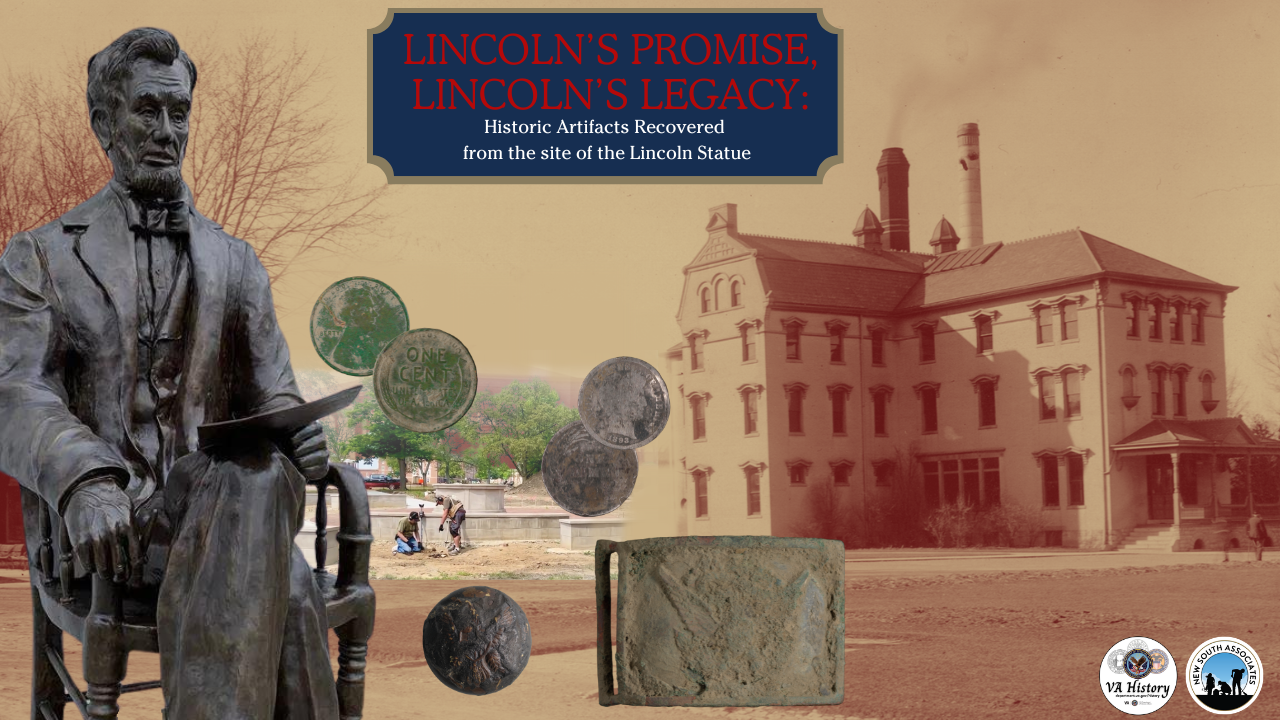
Curator Corner
Lincoln’s Promise, Lincoln’s Legacy: Historic Artifacts Recovered from Site of Dayton Statue
It all started when Bill DeFries, President of the American Veteran’s Heritage Center (AVHC), lost his wedding ring at the construction site for the statue of Abraham Lincoln on the campus of the Dayton VA Medical Center. He requested the assistance of the Dayton Diggers, a local nonprofit whose mission is to “research, recover, and document history” through their use of metal detector survey. The machines used by Dayton Diggers emit an electromagnetic field that responds to metal objects hidden below the ground surface. When they pinpoint a target, they use minimally invasive excavation to remove the object from the soil. In addition to the misplaced wedding band, their team uncovered historic artifacts that can be used to understand the history of Veteran care here in Dayton.
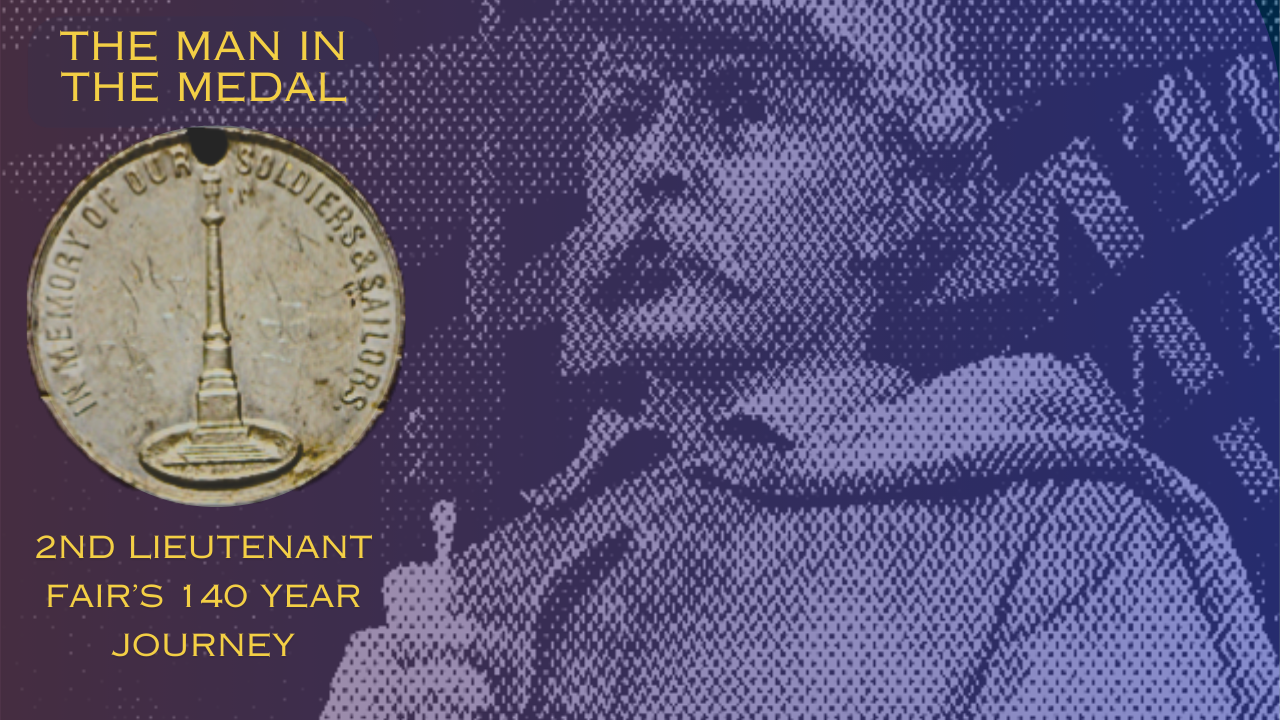
Curator Corner
What’s in the Box? 2nd Lt. George Fair’s 140 Year Journey
It started with a medal. Later on a button. Then, walks along the trails at the Dayton VA Medical Center and to the National Cemetery. Finally, it ended at a tall monument at the intersection of Monument Avenue and Main Street in downtown Dayton.
Well, it didn't quite end there. This was just the beginning in learning about the soldier, whose likeness sits atop the Montgomery County Soldier's Monument and stands watch at the main entrance to the Dayton VA Medical Center.
This is the story of a curator diving into the story of George Fair, Dayton's Veteran model and a 140 year journey.
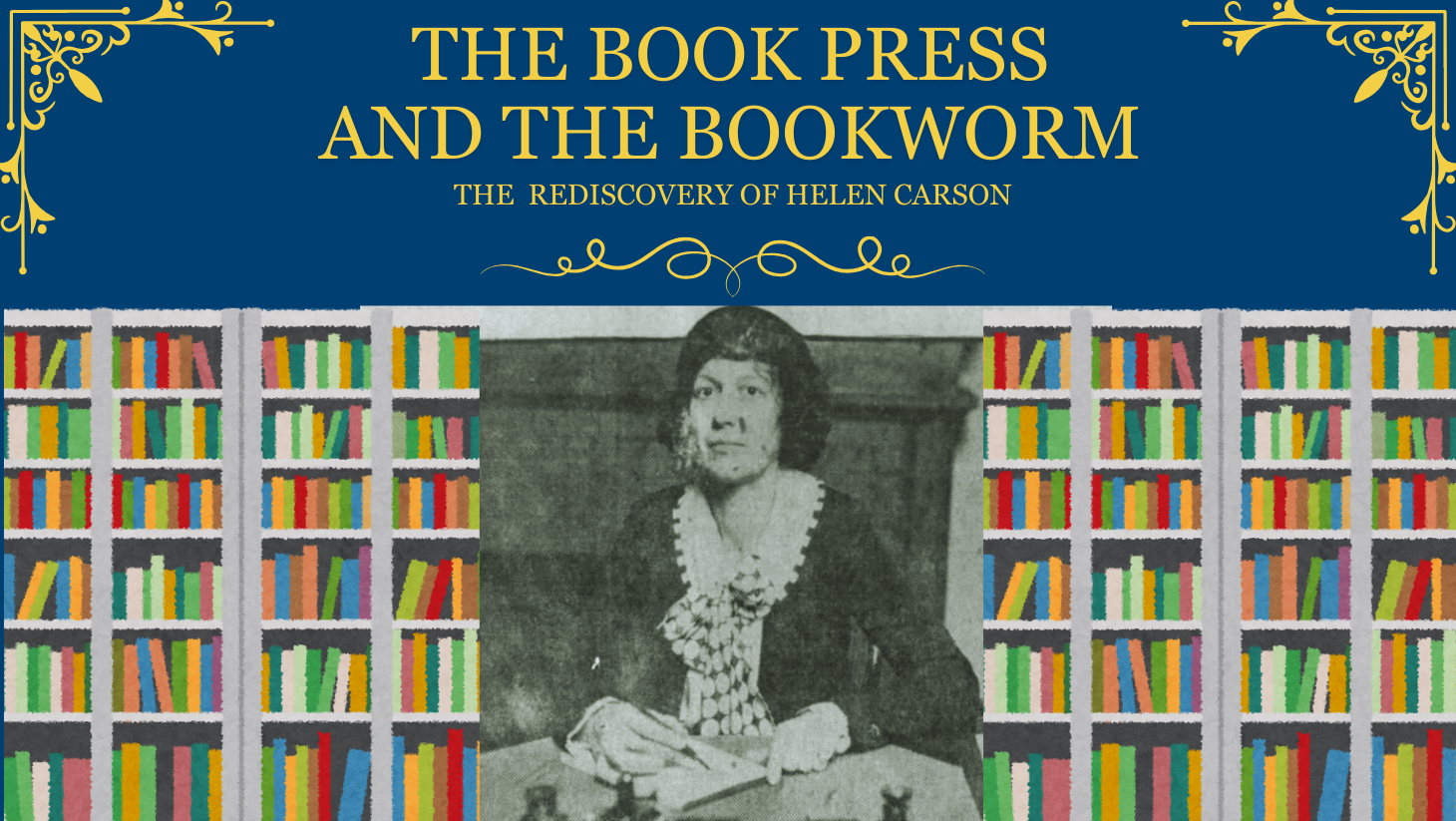
Curator Corner
What’s in the Box? Librarian Helen Carson
It isn’t often that researchers who work with historic objects get to know the people who used those objects every day. Sometimes we get lucky and can link artifacts to certain facilities or buildings on a historic VA campus, but usually we must look for more hidden lines of evidence to figure out how an object fits into the history of those who care for our Nation’s Veterans. As nice as it would be, it isn’t as if many artifacts turn up labeled with their owners’ names! So, imagine my surprise when my teammates and I began sweeping Putnam Library for any historic objects left behind before the building is closed for renovation, and found just that.
As far as artifacts go, its story seemed simple: book presses like these would have been used to help maintain and repair the thousands of books read in Putnam Library ever since it first opened in 1879. The day that I first got up close and personal with the press, I noticed a woman’s name scraped into the black paint of the platen (the technical name for the big metal plate used to hold books together). It said “Helen Carson” in big, legible letters. As we carefully transported the heavy press down the many stairs inside Putnam Library, I looked at the name and thought “Hm…wonder who that is?”.

Curator Corner
Reframing Mary Lowell Putnam
Mary Lowell Putnam is tied to VA history by her generous donation of a large volume of books to the Central Branch of the National Home for Disabled Volunteer Soldiers. These books, meant to honor her son who died in the Civil War, helped foster reading advancement for the Veterans who lived there after the war and into the 20th Century. However, her life was more than just a moment in time donating books. It included a life-long study of languages and a very sharp opinion that she shared in writing throughout her life.
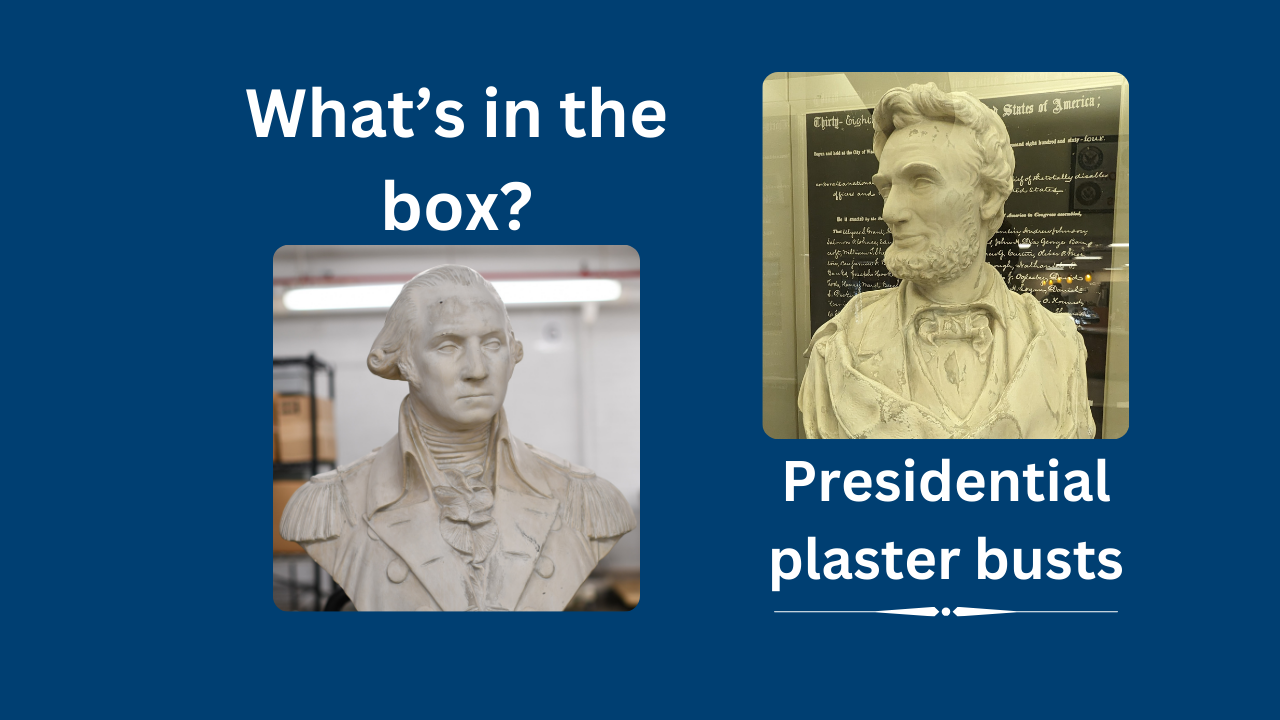
Curator Corner
What’s in the Box? A Pair of Plaster Presidential Busts
Presidents George Washington and Abraham Lincoln are among the most easily recognizable figures in American history. Their faces are symbols of wisdom, strength, and leadership. Even today, polls consistently rank them as the greatest or most successful presidents. With that in mind, it is unsurprising that the appreciation of these legendary statesmen has deep historic roots. In honor of their birthdays, our team at the National VA History Center explored those roots through this pair of plaster busts.
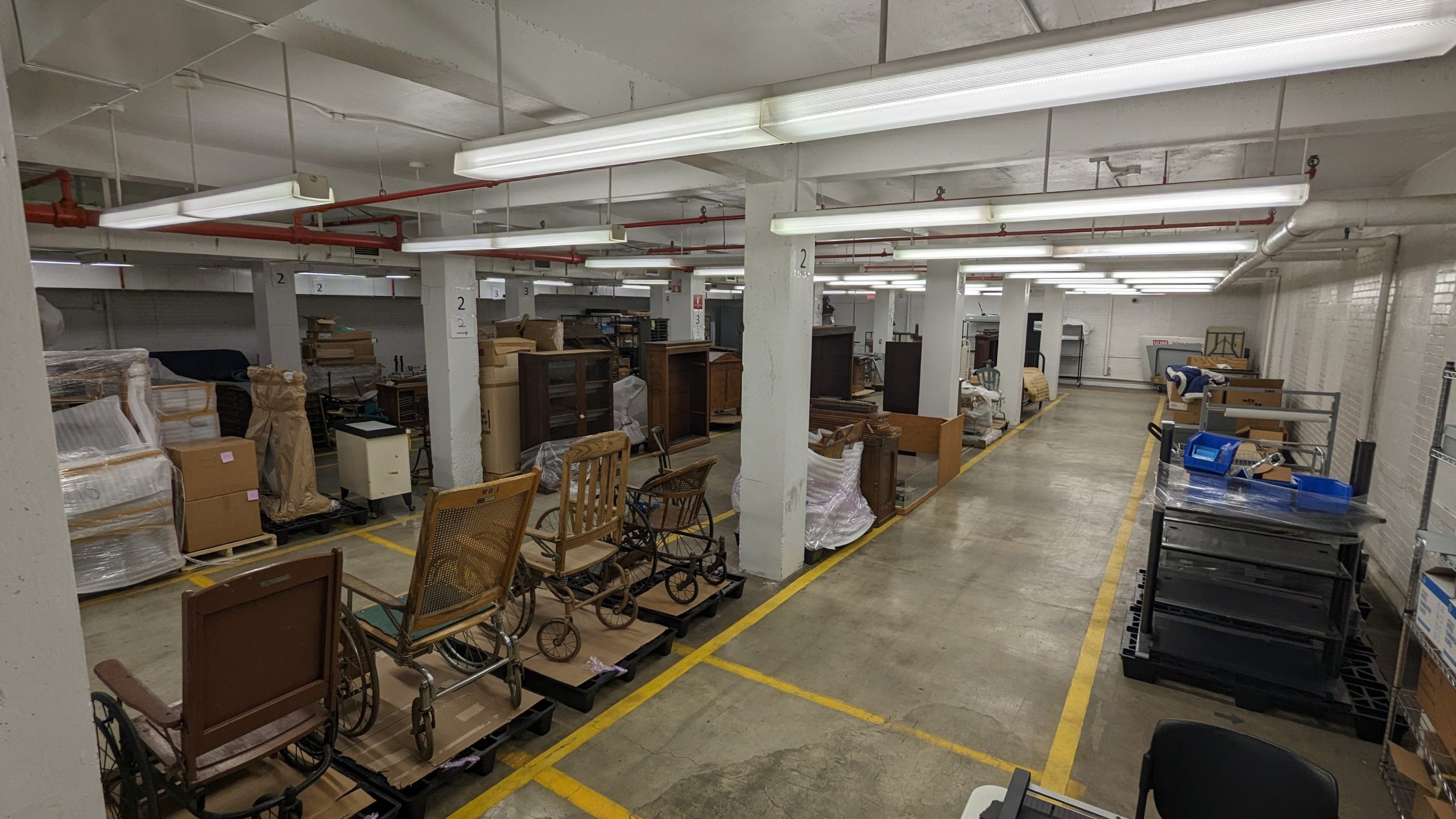
Curator Corner
We’re Moving On Up
After the flood from a burst pipe in the winter of 2023 damaged the temporary storage site for the National VA History Center collection and archives, the move to a new home was ramped up. Conducted earlier than expected, moving everything took massive amounts of coordination and elbow grease to get thousands of pounds of artifacts, equipment, and historical records to Building 126 on the Dayton, Ohio VA campus.

Curator Corner
Keeping Our Heads Above Water
What do you do when a water line bursts in a building holding hundreds of historic artifacts and thousands of archive materials? You react quickly. When cold weather hit Dayton, Ohio in 2022, the building holding the VA History collection suffered a burst water pipe which could endanger everything. Our National VA History team responded and enacted a plan with Dayton VAMC leadership on how to save the items that are critical to telling VA's Story.
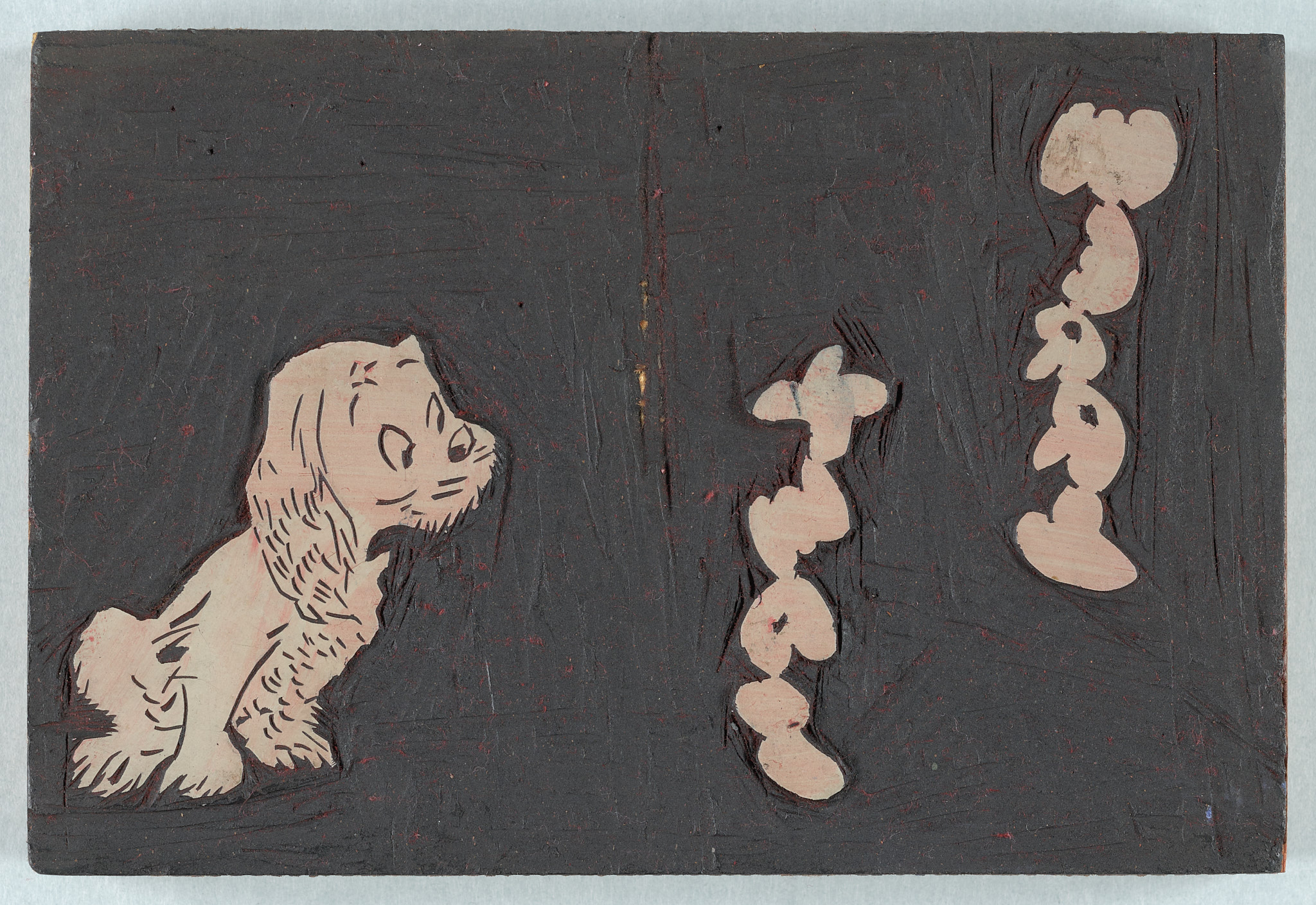
Curator Corner
What’s in the Box? Christmas Card Printing Block
What's in the box? - For this holiday and Christmas season, the curatorial staff at the National VA History Center found an item from the Mountain Home VA that involves a trade that is rarely used today: letterpress printing.
Phones and laptops make it easy to type and design cards that can be printed in mere moments. But in the past, printing a unique Christmas card, for example, would have required specialized training and skill to create a template. Which, is exactly what our staff at the NVAHC found in the latest box opened in the collection.
Happy Holidays!



